There are many types of birds in the world. It is estimated that there are about 10,000 different species of birds in the world, most of which are found in tropical areas. Our country is rich in bird resources. According to statistics, there are more than 1,300 species of birds in our country, many of which are endemic species that only live in China. The colors of birds are also very diverse, with different birds having a variety of feather colors and patterns. So do you know what blue birds are there in the world? This article brings you ten kinds of blue birds, namely purple-blue macaw, white-browed blue flycatcher, black-naped king flycatcher, blue-eared starling, copper-blue flycatcher, little fairy flycatcher, purple whistling thrush, Bluebird, common kingfisher, great blue cuckoo. Let’s take a look below!
1. Purple-blue Macaw (scientific name: Anodorhynchus hyacinthinus)
The Violet Macaw is one of the largest parrots in the world and one of the largest and strongest birds in South America. Their body length is about 100 centimeters, their wingspan can reach 1.5 meters, and their weight is generally around 1.2-1.7 kilograms. The Blue Macaw is a very beautiful bird with a striking combination of deep blue, bright yellow and black feathers. Their mouths are very large, thick, gray-black in color, and can easily crush hard nuts and seeds.
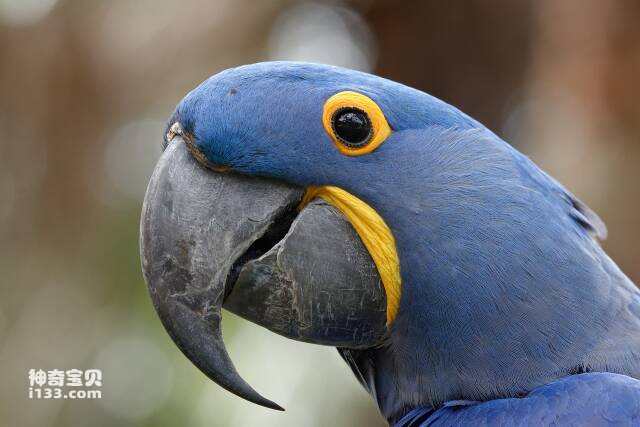
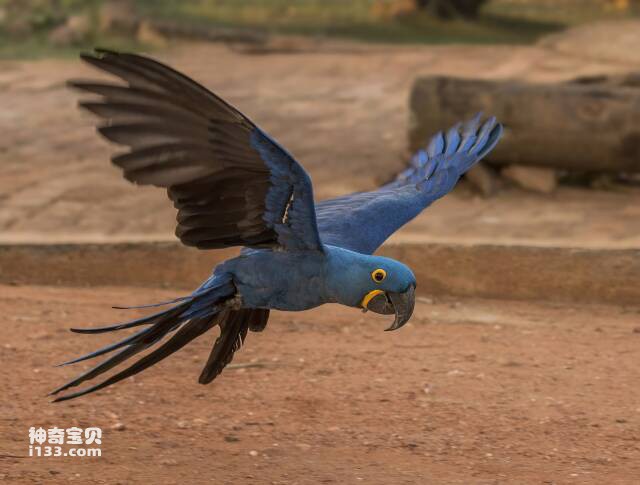
Blue Macaws are found in forest areas in South American countries such as Brazil, Bolivia and Paraguay, living near tall trees and rivers. They feed mainly on nuts, fruits, seeds and plant buds. Blue Macaws are social animals, usually living in pairs or groups, and communicate through a variety of calls. The blue macaw is one of the most popular pets due to its beautiful appearance and intelligent and witty personality. However, due to factors such as loss of habitat, trade, smuggling, and hunting, the blue macaw is facing an endangered status and needs protection and attention.
2. White-browed Blue Flycatcher (scientific name: Ficedula superciliaris)
The White-browed Blue Flycatcher, referred to as the Blue Mountain Flycatcher, is a small passerine bird belonging to the Flycatcher family. They are found in tropical and subtropical regions of Asia, including India, Nepal, Myanmar, Thailand, Laos and Vietnam. The body length of the Blue Mountain Flycatcher is about 12-13 cm. Its feathers are mainly light blue or gray-blue, and there are white spots around its eyes. Male Blue Mountain Flycatchers are more colorful than females. Their mouths are very elongated and straight, adapted for feeding on insects and other small arthropods.
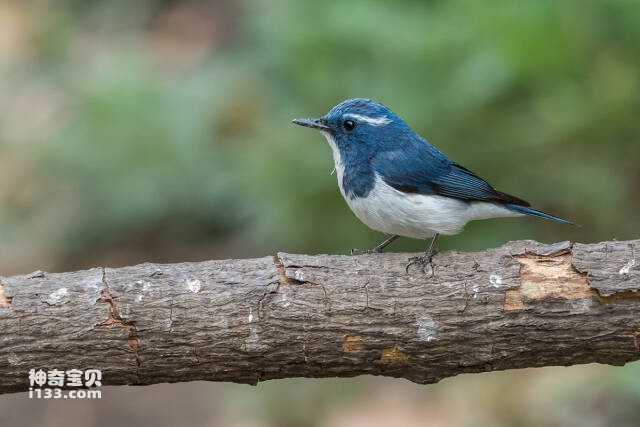
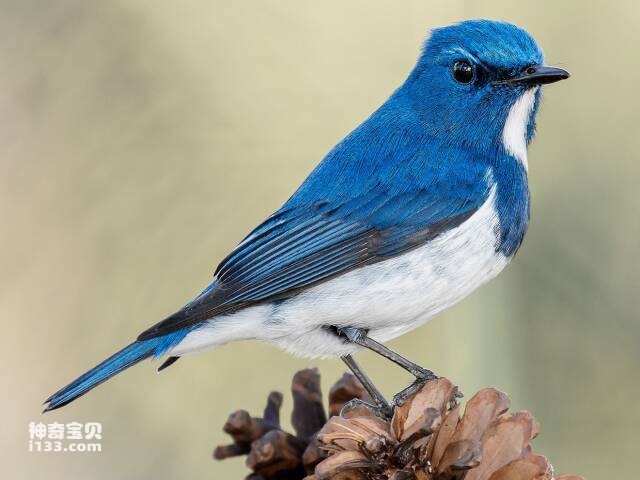
Blue Mountain Flycatchers usually live in high-altitude forests, which are often called "cloud forests" because they are shrouded in clouds and mist. In this environment, the temperature is lower and the humidity is higher, which is suitable for the survival and reproduction of blue mountain flycatchers. They usually build thatched nests and nest on tree branches. The Blue Mountain Flycatcher is a beautiful and mysterious bird that is protected because it lives in remote areas and in small numbers. Although the Blue Mountain Flycatcher plays an important role in the balance of the ecosystem, this bird is under threat due to the impact of human activities and habitat destruction.
3. Black-naped King Flycatcher (scientific name: Hypothymis azurea)
The black-naped king flycatcher, also known as the black-naped king flycatcher, is a small passerine bird belonging to the family flycatcher. They are distributed in Southeast Asia, including countries such as India, Nepal, Bhutan, Sri Lanka, Philippines, Malaysia and Indonesia. The black-naped flycatcher is about 16 centimeters long, with a black head and neck, dark gray back and wings, and a white belly. Their mouths are very slender and curved, adapted for feeding on insects and other small invertebrates.
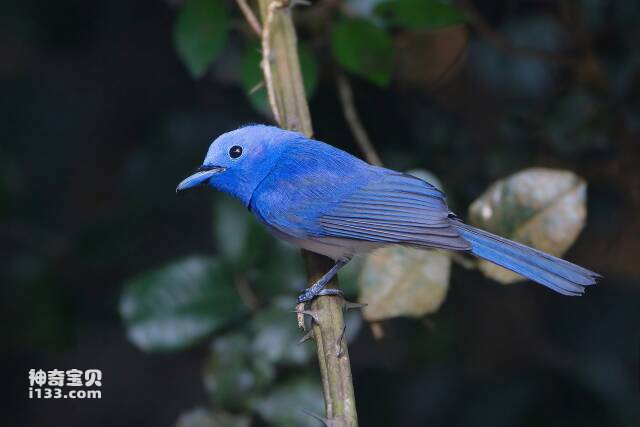
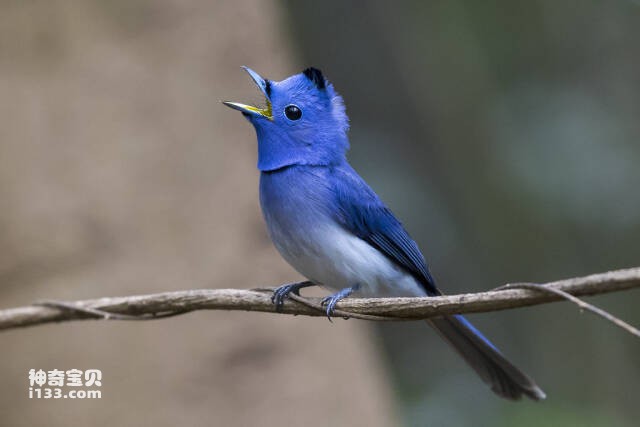
The black-naped flycatcher usually lives in forests in tropical and subtropical areas, and likes to live in mountains, rivers and near villages. They like to jump on trees, hunt insects, and make crisp calls. The Black-naped Flycatcher is a beautiful and lively bird that is often watched and bred by bird enthusiasts. Although the population of the black-naped flycatcher remains relatively stable, the bird also faces a certain degree of threat due to the impact of human activities and habitat destruction.
4. Blue-eared Starling (scientific name: Lamprotornis chalybaeus)
The blue-eared starling, also known as the great blue-eared starling, is a beautiful bird that belongs to the starling family. They are found across a wide area of sub-Saharan Africa, including countries such as Kenya, Tanzania, Zambia, Angola and South Africa. The Great Blue-eared Starling is about 23 centimeters in length, with dark purple or black feathers all over its body, green or blue on its head and neck, and a ring of light blue feathers around its ears. Males and females are similar in appearance, but males are more colorful.
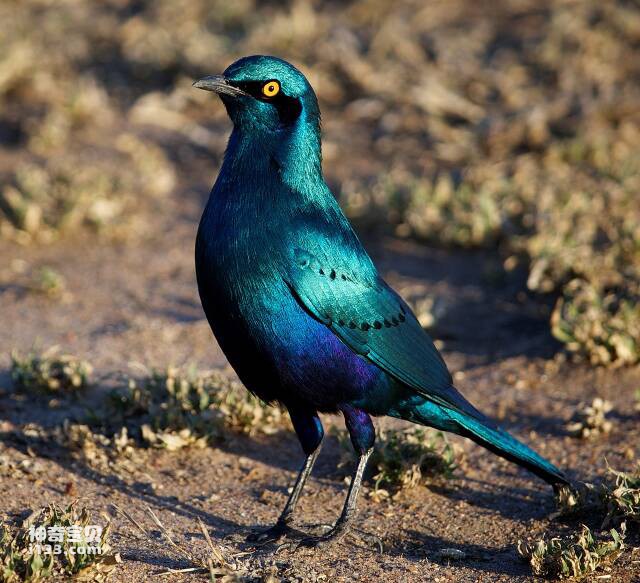
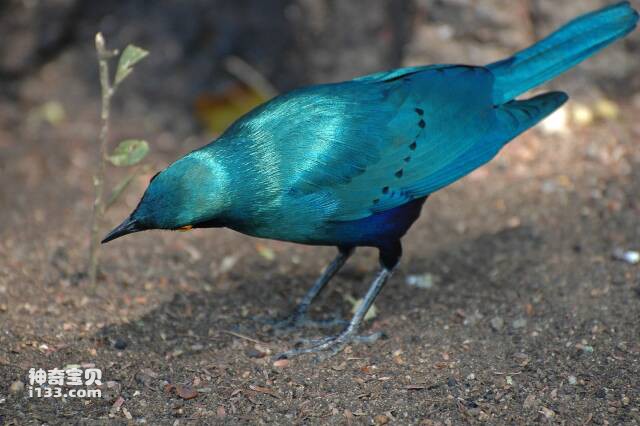
The great blue-eared starling mainly lives in dry open areas, such as grasslands, shrubs, mountains and rural areas. They are diurnal birds, usually active during the day and communicate through a variety of calls. Great Blue-eared Starlings are social animals that often roost and forage in groups. They mainly feed on fruits, seeds and insects and have a certain impact on agricultural and horticultural crops. In Africa, people often keep them as pet birds because of their beautiful appearance and beautiful sound.
Although the population of the great blue-eared starling is currently stable, this bird is also facing a certain degree of threat due to human development and habitat destruction, and requires protection and attention.
5. Copper-blue Flycatcher (scientific name: Eumyias thalassinus)
The copper-throated flycatcher, also known as the blue-throated flycatcher, is a small passerine bird belonging to the flycatcher family. They are found in tropical and subtropical regions of Asia, including India, Nepal, Myanmar, Thailand, Laos and Vietnam. The Green-throated Flycatcher is about 13 centimeters in length. Its feathers are mainly a combination of dark blue and yellow-green, with a silver-gray head and a bright blue throat. Males and females are very similar in appearance.
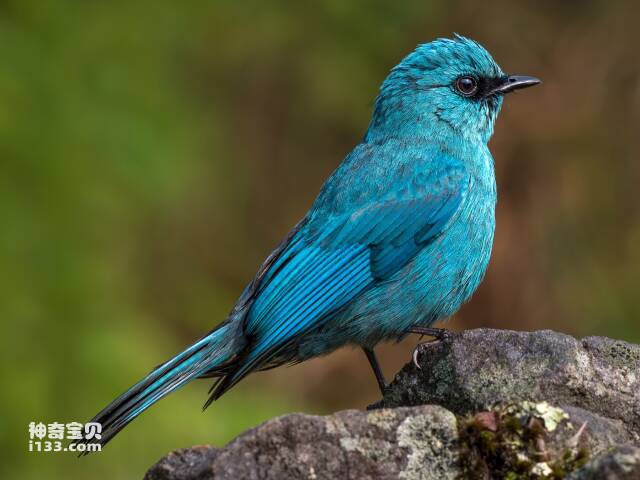
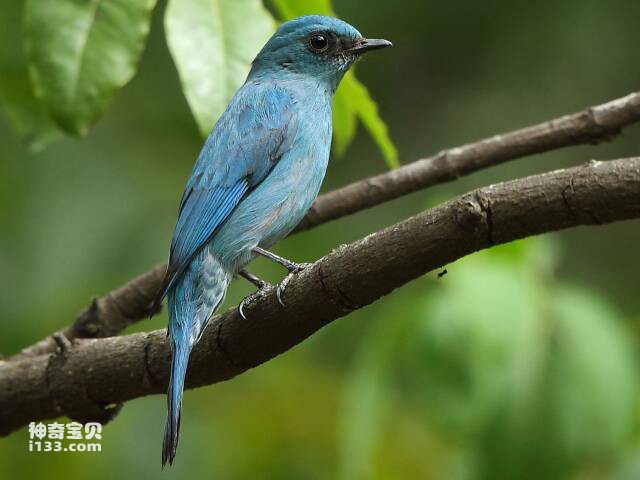
The Green-throated Flycatcher usually lives in forests in mountainous areas and likes to live in humid environments, such as near streams. They feed on insects, usually on tree trunks, and make clear calls to attract mates or warn others of the same species. The Green-throated Flycatcher is a beautiful and elegant bird that is often viewed and bred by bird enthusiasts. Although the population of the green-throated flycatcher remains relatively stable, the bird also faces a certain degree of threat due to the impact of human activities and habitat destruction.
6. Little Fairy Flycatcher (scientific name: Niltava macgrigoriae)
The Lesser Fairy Flycatcher, also known as the Little Blue Flycatcher, is a small passerine bird belonging to the Flycatcher family. They are found in tropical and subtropical regions of Asia, including countries such as India, Nepal, Myanmar, China, and Vietnam. The Little Blue Flycatcher is about 10-12 centimeters in length, and its feathers are mainly a combination of dark blue and black, with a gray head and bright orange or red throat. Males are more colorful than females.

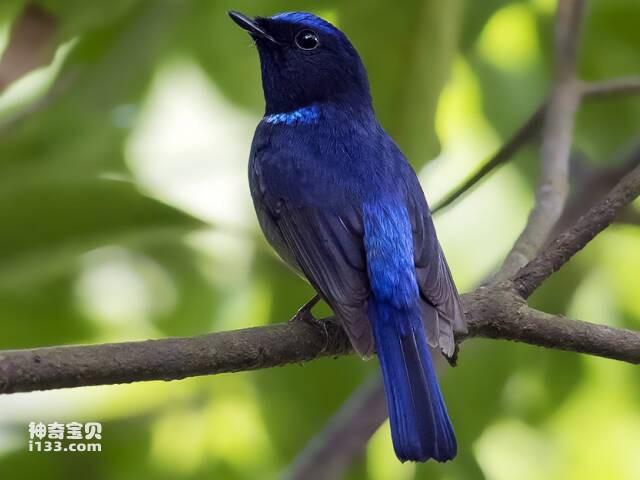
The Little Blue Flycatcher usually lives in forests in mountainous areas and likes to live in high-altitude environments. They feed on insects, usually on tree trunks, and communicate through a variety of calls. The Little Blue Flycatcher is a beautiful and mysterious bird that is often watched and bred by bird enthusiasts. Although the population of the little blue flycatcher is relatively stable, this bird also faces a certain degree of threat due to the impact of human activities and habitat destruction.
7. Purple whistling thrush (scientific name: Myophonus caeruleus)
The purple whistling thrush, also known as the blue songbird, is a medium-sized bird belonging to the thrush family. They are distributed in tropical and subtropical regions of Asia, including countries such as China, India, Nepal, Myanmar, Thailand, and Vietnam. The Blue Songbird is about 25 centimeters in length. Its feathers are mainly dark blue or grey-blue, with dark back and wings and white throat. Males and females are similar in appearance, but males are more colorful.
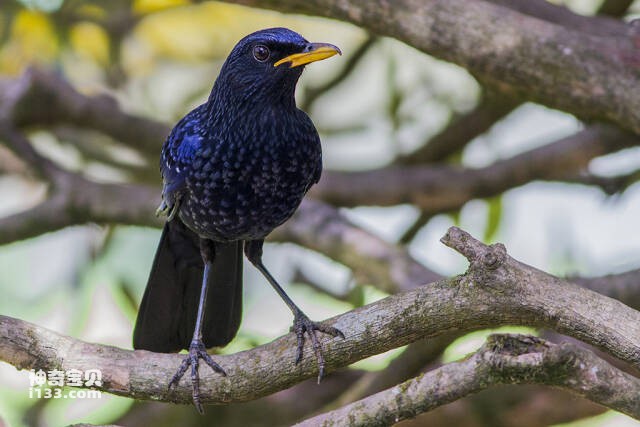
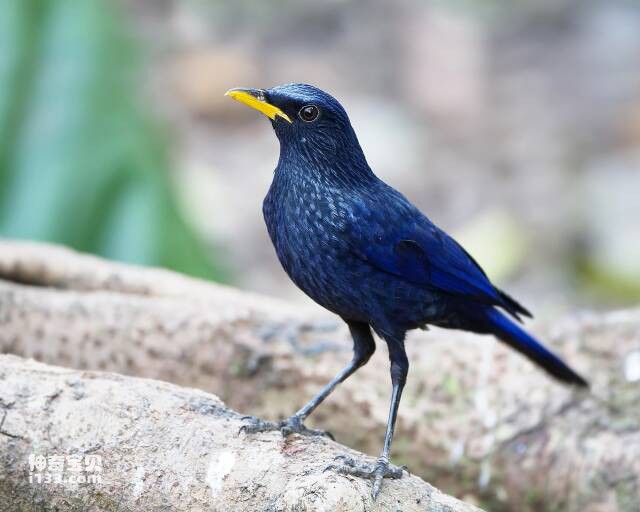
Bluebirds usually live in mountain forests and like to live near rivers and waterfalls. They feed on insects, worms, shellfish and small invertebrates, and whistle and sing to attract mates or warn others of the same species. The Blue Songbird is a beautiful and elegant bird that is often viewed and bred by bird enthusiasts. Due to its beautiful appearance and versatile performance, the bluebird has also become the protagonist of some cultures and legends. Although the bluebird's population is relatively stable, the bird faces a certain degree of threat due to the impact of human activities and habitat destruction.
8. Bluebird
The bluebird is a small passerine bird belonging to the thrush family. They are found in North America, including the United States, Canada, and Mexico. The bluebird is approximately 16-20 centimeters in length, and its feathers are a combination of bright sky blue, reddish brown and white. Males and females look essentially the same, but males are more colorful. There are three types of bluebirds in North America: the Eastern Bluebird is found east of the prairie; the Western Bluebird is found west of the prairie; and the Mountain Bluebird is found above. 5,000 ft. Western Mountains.
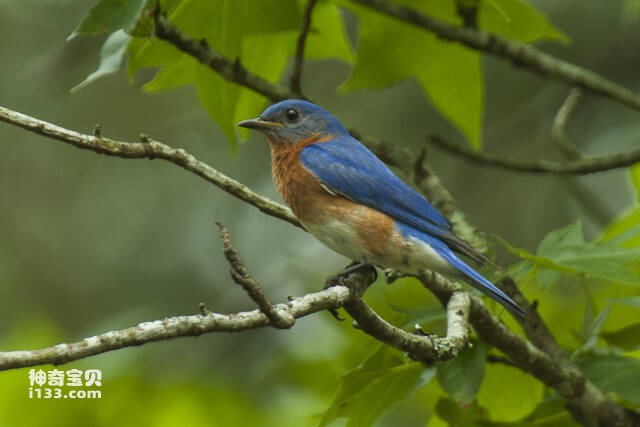
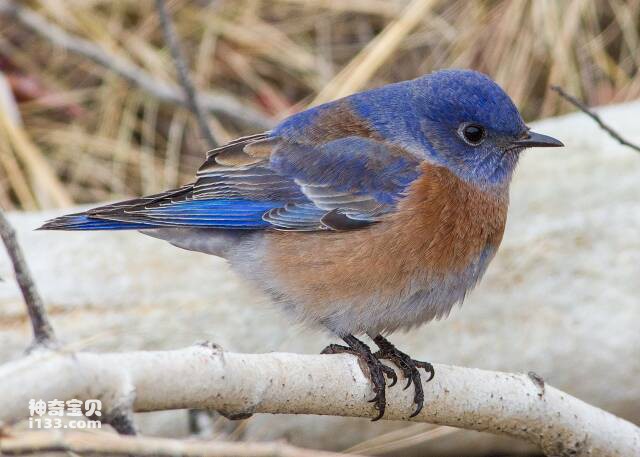
Bluebirds typically live in open grasslands, woodlands, and farmland, preferring to live in trees or shrubs. They feed on insects and other small invertebrates and sing soft and beautiful songs to attract mates or to warn others of the same species. The bluebird is a beautiful and popular bird that is widely considered a symbol of happiness and hope in North America. They are often depicted in artwork and literature, and have become the state birds of many U.S. states. Although bluebird populations are relatively stable, the bird faces certain threats due to the impact of human activities and habitat destruction. Therefore, in North America, people use various methods to protect and breed bluebirds.
9. Common Kingfisher (scientific name: Alcedo atthis)
The kingfisher is a small passerine bird belonging to the family Kingfisheridae. They are distributed in regions such as Europe, Asia and North Africa. The kingfisher is about 16 centimeters long and its feathers are a bright combination of blue, orange and white. Males and females are similar in appearance, but the male's mouth is slightly longer than the female's and there are some differences in color. Kingfishers mainly live near waters such as rivers, lakes and coastal edges. They feed on fish and other small aquatic creatures. They have superb hunting skills and will quickly dive into the water to catch fish. Kingfishers usually look for a protruding branch or rock to serve as a place to roost and feed.
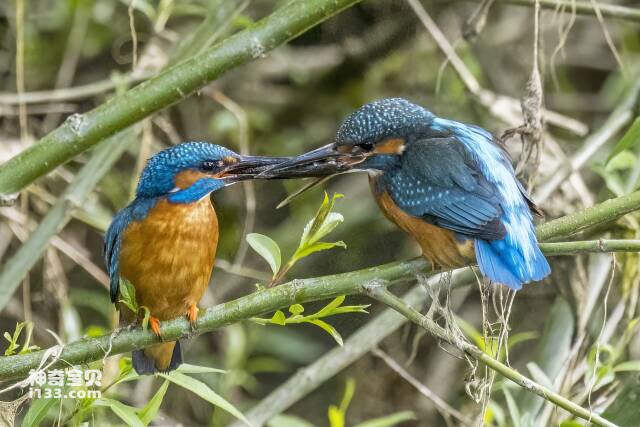
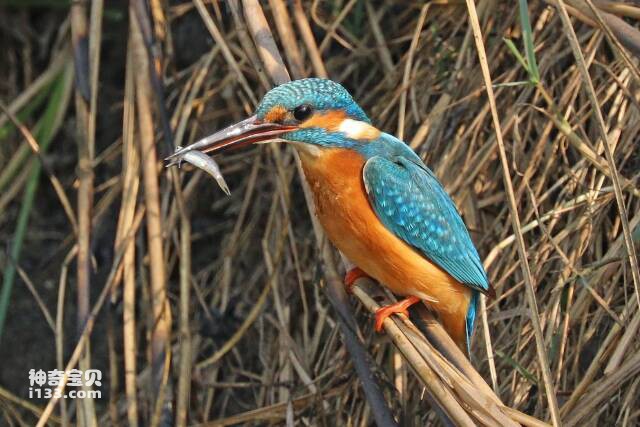
The kingfisher is a beautiful, elegant and popular bird that is often depicted in artwork and literature and has become one of the symbols of many countries and regions. Although kingfisher populations are relatively stable, the bird faces certain threats due to the impact of human activities and habitat destruction. Therefore, in many countries and regions, people protect and breed kingfishers in various ways.
10. Corythaeola cristata (scientific name: Corythaeola cristata)
The great blue cuckoo, also known as the great blue thrush, is a large bird belonging to the thrush family. They are found in the west and central regions of Africa, including countries such as Cameroon, Ghana, Côte d'Ivoire, Uganda and Kenya. The Great Blue Thrasher is about 70 centimeters long, and its feathers are a combination of dark blue, green and gray, with bright yellow cheeks and throat. There is a distinct white spot on the wings. Males and females are similar in appearance, but the male's crest is taller and more colorful.
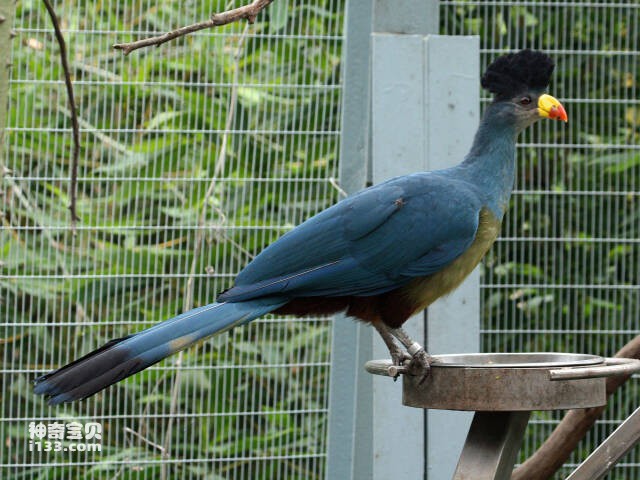
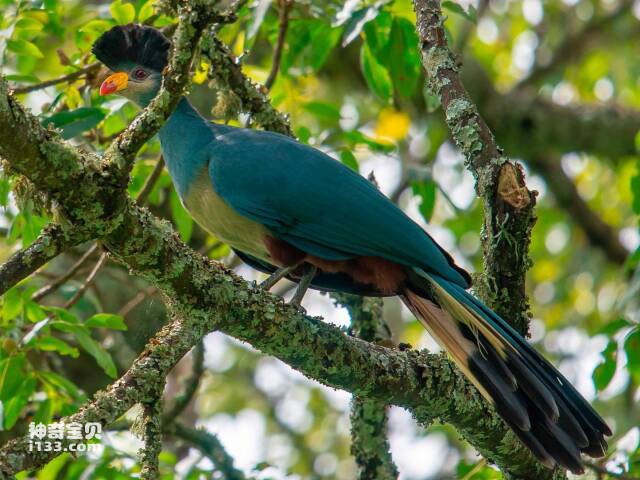
The Great Blue Thrush usually lives in forests and jungles, and likes to live in the treetops or perch in high trees. They feed on a variety of fruits, berries, nuts, and insects, and make loud calls to attract mates or to warn others of the same species. The Great Blue Thrasher is a beautiful and mysterious bird that is often watched and bred by bird enthusiasts. They are also an important image in the artistic and cultural works of many African peoples. Although the Great Blue Thrasher's population is relatively stable, the bird also faces a certain degree of threat due to the impact of human activities and habitat destruction.
Research basis: The ten kinds of blue birds are mainly compiled based on related websites. Through searching and other websites, we can understand the distribution of blue feathers of related birds, and comprehensively rank and recommend them. The list is for reference only. If you have any questions, , welcome comments/criticisms and corrections at the end.
animal tags:
We created this article in conjunction with AI technology, then made sure it was fact-checked and edited by a Animals Top editor.